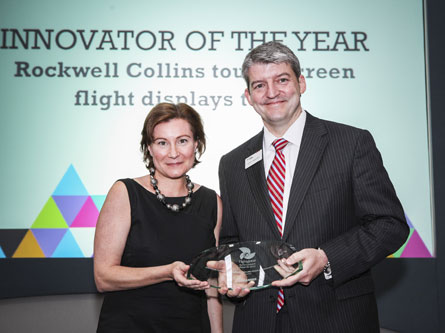Nine months ago, Rockwell Collins raised the ante in the high technology world of avionics, leapfrogging its competitors in the Part 23 light jet and turboprop arena - a sector that has increasingly turned to Garmin for leading-edge user interface technologies such as synthetic vision and touchscreen controllers.
Rockwell Collins, and its US-based competitor Honeywell, have traditionally focused on larger Part 25 business jets, while Garmin has garnered market share on the lighter side of general aviation through intuitive interface features - most recently touchscreen flight management system controllers.
This is set to change before long, when the first versions of Rockwell Collins' new Pro Line Fusion system will hit the market in a retrofit application.
The suite, applicable as an upgrade to existing Pro Line 21 flightdecks, will feature three 381mm (15in) touch screen primary and multifunction displays - an industry first.
The large touchscreen panels are part of a broader "head-up, eyes-forward" philosophy Rockwell Collins has developed, in part to aid single-pilot operations with software so intuitive that "avionics training is unnecessary and nonexistent", says Adam Evanschwartz, Rockwell Collins' principal marketing manager for product systems. "You touch what you want to change," he says.
The head-up, eyes-forward theme also carries up to the head-up guidance systems for Pro Line Fusion, which are approved for synthetic vision. In the future, a fusion of synthetic vision and enhanced vision, whether by infrared sensor technology, millimetre-wave radar or other sensors, will augment computer-based imagery on primary flight displays and head-up guidance systems with the real world views, bringing together the best of both worlds together for enhanced situational awareness and safety, and lowered landing minima.
Evanschwartz says the touchscreen flightdeck allows a mission to be carried out from start to finish completely on-screen, with "drag and drop" options and on-screen rerouting. On the moving map display, for instance, a pilot can draw with his or her finger a path around a storm along the route, select "execute" from a drop-down menu, and the flight management system (FMS) will be reprogrammed with the new route. Given the problems of turbulence, and a portion of the pilot population who may not want to evolve with the times, there is also a cursor control device that can be used. A tab cursor device on the centre console, similar to the puck-shaped cursor control devices used in the automotive industry, is also available for interfacing with the system.
The touchscreen philosophy also applies to the world away from the flight deck - Evanschwartz says the company is also developing iPad applications that, through Rockwell Collins' Ascend service, will wirelessly connect with Fusion, allowing pilots to develop flight plans away from the aircraft and have the information automatically uploaded to the flight management system once on board.
Evanschwartz says the company is experimenting with a focus group on pre-flight planning with Ascend, including operations with the iPad.
The market potential must be significant, as the company is building a new manufacturing lab for the product line, with plans for 150 employees, at the company's headquarters in Cedar Rapids, Iowa.
Colin Mahoney, vice-president sales and marketing for commercial systems at Rockwell Collins, says the company expects "to be a leader" in size, weight and cost for integrated avionics at the lower end of the market. "We will be able to go head-to-head with Garmin on price," he says.
The touch technologies will no doubt migrate up to larger, heavier Part 25 aircraft, where touching the primary flight display may not be physically possible because of its distance from the user, but touchscreen flight preparations or touchscreen multifunction displays or other controllers will be possible and practical.

Source: Flight Daily News
















